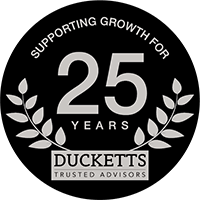There’s a new book coming out by Chris Zook called Unstoppable: Finding hidden assets to renew the core and fuel profitable growth. Take his article in April’s HBR, mix it with our consulting experience at the small business level and this is what you get:
There’s been the continuous threat (or promise?) of the end of business as we know it for as long as I can remember. First the Japanese did motorbikes and cars, then we had the Dotcom fiasco and now we’ve got competition from China, India etc. (the Global Knowledge Economy?).
The 2 questions that immediately pop out are:
- Why did nobody see it coming
- What could anybody do about it?
You could no doubt answer the first question yourself: it must be tied in with inertia. It’s very difficult to get people to change, particularly if they’ve been successful doing it that way in the past. Anyway, small businesses tend to just fade away rather than fail. The best big business example has to be Polaroid. It simply melted in the heat of digital technology.
The second question is more entertaining. Assuming a business has indeed noticed that its core business is fading, there are 3 obvious responses:
Defend the status quo (and die slowly)
Merge with somebody else (the accountant’s solution)
Rush into a new market (bet the company)
As you would guess, the chances of success are not good, whichever way you go.
The alternative is to shift your core strategy, thereby transforming the company. In our world, this usually means working out what it is you do that your customers are really buying (ask them?) and then putting resources behind this. If it is still not possible to make a sensible return, leave the industry.
A big company example (but not American, for a change):
Dometic was a Swedish company, formed in 1922 by 2 engineering students, which applied absorption technology to fridges. Such fridges had no moving parts (no need for electricity) and just required a propane tank to drive a heat exchanger. This made the fridges suitable for boats and caravans. Various changes of ownership washed through and by 1973 the company had a turnover of $17m, but was losing money. At this point, Sven Stork was put in to fix the company. He aggressively attacked the hotel minibar market (where silent running was a big plus), turned the company back to profit and allowed it to buy out some of its competitors.
The real breakthrough came when Stork and his team thought about the RV (translation: campervan) market. They already had nearly 100% of the RV fridge market, so there was apparently nowhere to go. However, if they were actually in the business of making RVs sensible places to live in, then they would supply air-conditioning, heating, lighting, water etc – RV interior systems. As ever, it took Stork some time to persuade the rest of the company that this made sense.
Furthermore, the focus on RVs meant that Dometic could streamline its cost base and use its size to go straight to the RV dealers, thereby completely excluding the competition. By 2005, turnover was $1.2B, the company was highly profitable and commanded 75% of the RV interiors market.
I would be truly impressed to see any of our Hereford businesses get this big, but the key question is always “What business are we in?”.
Incidentally (and cribbing directly from Chris Zook) you can evaluate your core business by asking 5 broad questions => What is the state of our:
- Core customers?
- Core differentiation?
- Industry’s profit pools?
- Core capabilities?
- Culture and organisation?
You might like some help translating that into the language of small business?
Contact Mark Vickress on mark@duckettsgrowth.co.uk
the key question is always... What business are we in?
Find out More

